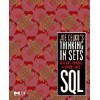- Obecnie brak na stanie



Brak towaru
Zestaw AVT do samodzielnego montażu czasowego włącznika zbliżeniowego. AVT1980 B
Brak towaru
Brak towaru
Kamera o rozdzielczości 2 MPx z interfejsem USB. Wyposażona w sensor CMOS OV2710 z ruchomym filtrem IR i oświetleniem IR LED. ArduCam B0205
Brak towaru
Zmontowany uniwersalny moduł zasilający 9V. AVT1895/9 C
Brak towaru
Brak towaru
Moduł z 2 wyświetlaczami matrycowymi LED 5x7 przeznaczony do współpracy z Raspberry Pi. Wykorzystuje sterowniki IS31FL3730 i komunikuje się przez interfejs I2C. Pimoroni PIM526
Brak towaru
Kabel stereo minijack 3.5 mm od Extreme Media o długości 120 cm to praktyczne rozwiązanie do łączenia sprzętu audio w domu i biurze. Dzięki wysokiej jakości materiałom oraz niklowanym końcówkom zapewnia stabilne połączenie i długotrwałą niezawodność. Plastikowy oplot dodatkowo zwiększa trwałość przewodu, chroniąc go przed uszkodzeniami. Natec NKA-0538
Brak towaru
Brak towaru
Brak towaru
Minikomputer NanoPi R5C zaprojektowany przez FriendlyElec. Jest wyposażony w procesor Rockchip RK3568B2, moduł WiFi, 2 GB pamięci LPDDR4x RAM i pamięć eMMC 32 GB. Wspiera obsługę kart microSD i współpracuje z systemami operacyjnymi takimi jak FriendlyWrt, Android, Debian. FriendlyELEC NanoPi R5C
Brak towaru
Brak towaru
ULTRANISKOSZUMNY PRZEDWZMACNIACZ AUDIO Z SSM2210 - ZESTAW DO SAMODZIELNEGO MONTAŻU
Brak towaru
Brak towaru
Brak towaru
Brak towaru

